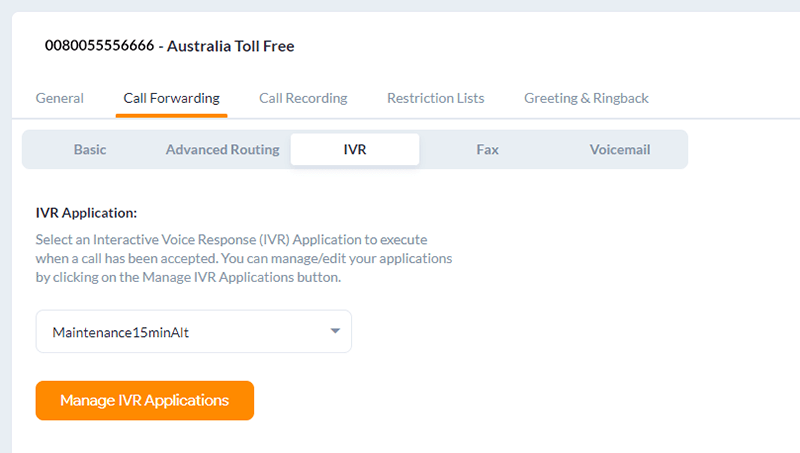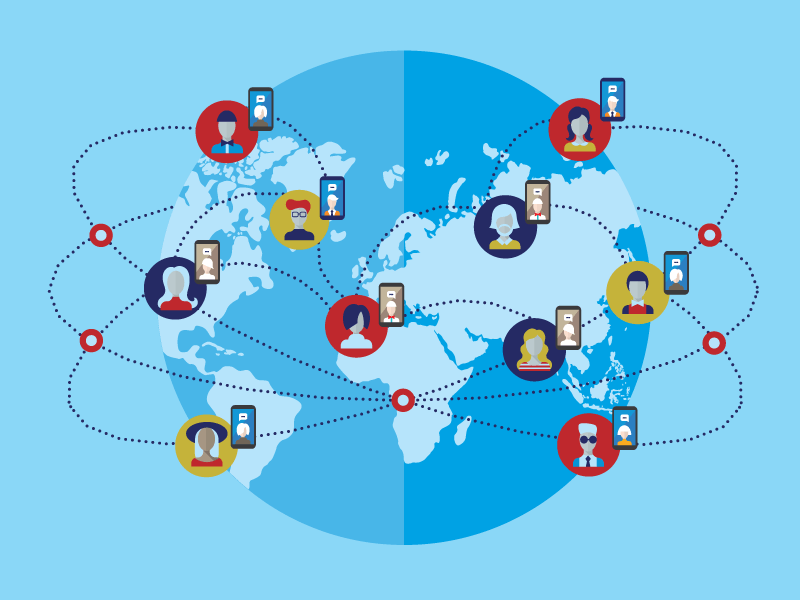Want to offer your customers support and sales in the time and location most convenient for them? You can use geo-routing to route incoming calls to the closest location or based on the caller ID. This way, you can match the call with the nearest customer support center in the closest time zone and region.
What is Geographic Call Routing?
Geographic call routing — also known as geo-routing, caller ID routing, and location-based routing — is an advanced call routing feature. Call routing is a cloud phone service feature that answers calls and routes callers to specific phone lines, extensions, or locations based on pre-set rules. With geographic call routing, these calls are routed based on the caller’s phone number and area code. And you can route calls to:
- Business’ closest location
- Centralized call center
- Company hub
- Satellite offices
- Remote agents located in specific regions
- Locations needing more business, and so on.

How Does Geographic Call Routing Work?
There are a few different ways you can set up geo-routing for your business. You can route calls based on location by either:
- Automatically routing calls based on the country code and caller ID, or
- Asking callers to select their location from a preset menu.
You will need to use a cloud IVR (an automated voice response system) or auto-attendant to manage incoming calls. You can then set rules for the system to follow and route calls accordingly.
Based on how advanced your IVR is, you can set it to recognize the country code of incoming calls and then route calls to a predetermined location where your employees or agents can answer the phone and assist customers.
Alternatively, you can set up the IVR system to ask callers to type in a number that corresponds to their location and have the IVR route the call to the nearest office location or service center.
Basically, with geographic call routing, you get to choose which areas or regions route calls to which locations, satellite offices, or call centers.
Who Can Benefit from Geo-Routing?
Geographic routing is ideal for companies with multiple locations or a large global customer base. It helps connect customers to agents or employees in their time zone, region, and language. This helps further improve caller experience as callers get assistance matching their time and preferences.
How to Set Up Geo-Routing?
Global Call Forwarding offers various advanced call routing options such as time-based routing, geo-routing, skill-based routing, simultaneous ringing, and sequential forwarding. These features come included with our cloud phone number plans, and so you do not need to purchase additional services.
You can get and set up geographic routing for your business with Global Call Forwarding in a few steps:
- Get cloud phone numbers for target countries and regions.
- Log in to your control panel.
- Choose a phone service line and click on Settings.

- Select Call Forwarding.
- Then, click on the IVR and Manage IVR Applications. This will take you to our IVR Manager.

- Click on Create New Application.

- Then, under Advanced Actions, choose Caller ID Routing.

- Set up a new rule to route calls based on caller ID.

5 Benefits of Geographic Call Routing
But why should your business consider routing calls geographically? Advanced call routing features such as geo-routing have many benefits, from improving caller experience to offering advanced call management solutions. Here is why your business should consider getting geographic call routing for your business communication system:
1. Simplified Call Process
Since callers are automatically routed to the right location or agent, they do not need to be manually routed or transferred. In other words, no talking to the wrong people and getting bounced around. geo-routing reduces the number of interactions by letting the caller reach the right destination on the first try. This also means reduced hold times and less waiting for your customers.
2. One Number for Multiple Locations
Geographic call routing is a good solution for businesses with customers and locations in different parts of the world. Instead of using multiple phone numbers for each region, you can simply use one number and forward incoming calls to the most appropriate locations.
3. Offer 24/7 Global Customer Support
By routing calls based on the caller’s location, you can extend customer support hours by adopting a follow the sun support model. Such an approach lets you route calls from one location to another during different times of the day and based on the caller’s location.
As such, you can route calls coming in from one region to your customer support team in that region or time zone instead of your primary support center. This way, you offer support outside regular business hours, and your reps won’t need to work overtime to manage after-hours calls.
This allows your business to offer customer support globally by letting incoming calls route to the closest customer service or sales teams instead of your headquarters.
4. Local Call Reports
You can also use geographic call routing to get localized call reports. Track international phone calls to get a better idea of where your calls are coming from and where your customers are located. This will help you determine what marketing and sales efforts are working according to plan and which regions need more nurturing.
5. Increased Customer Satisfaction
Lastly, and perhaps most importantly, geo-routing helps your business offer excellent customer support and increase customer satisfaction. It does so by reducing wait and hold times, allowing callers to connect at convenient times, and ensuring callers reach the right agent quickly. After all, no one wants to be waiting on the phone for hours.
Ready to Get Geographic Call Routing for Your Business?
At the core of any business, you want to do everything you can to improve customer experience. The easier you make experiences for callers, the more likely they will become recurring customers. And routing calls based on the caller’s location can reduce wait times and make your business more customer-friendly.
Try out geographic call routing for your business today with Global Call Forwarding. Sign up online or speak with our representatives to learn more about how this service fits your business.
















